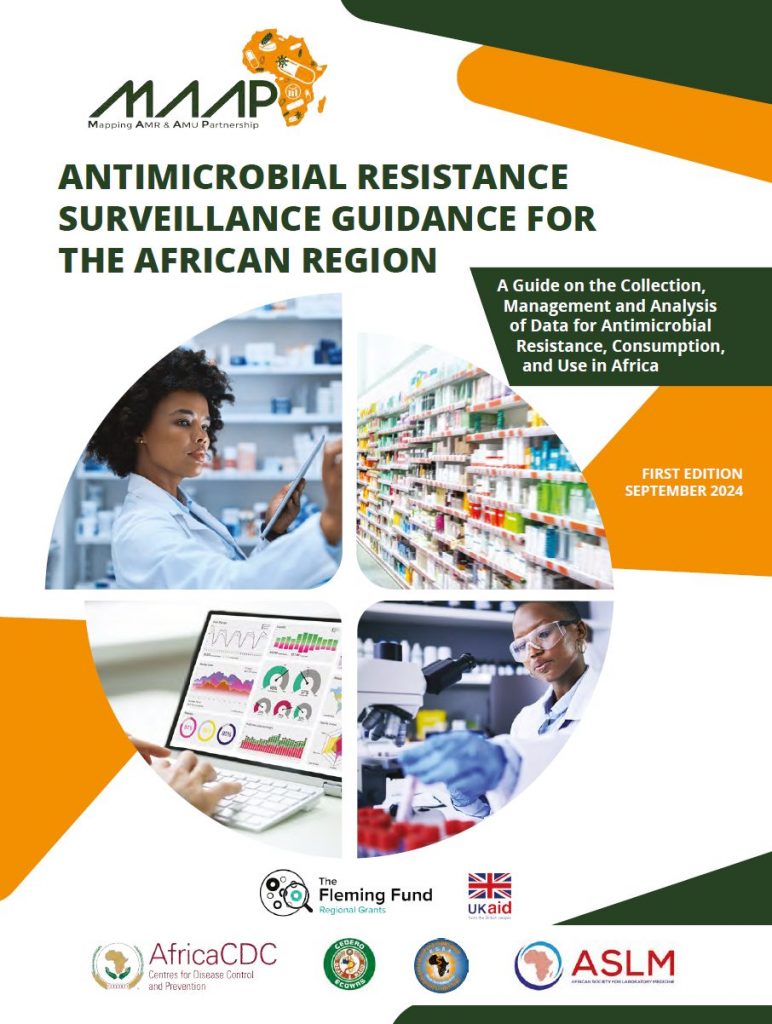1. BACKGROUND
1.1 ANTIMICROBIAL RESISTANCE, ITS PUBLIC HEALTH RELEVANCE AND BURDEN IN AFRICA
Antimicrobials are medicines, including antibiotics, antivirals, antifungals, and antiparasitics, that are used to prevent and treat infections in humans, animals, and plants. Antimicrobial Resistance (AMR) arises when bacteria, viruses, fungi, and parasites no longer respond to these medicines, rendering them ineffective and making infections more difficult to treat (1). This resistance increases the risk of disease spread, severe illness, disability, and death. Although AMR is a natural phenomenon driven by genetic
changes in pathogens, it is significantly accelerated by human activities such as the misuse and overuse of antimicrobials in healthcare, agriculture, and animal husbandry.
AMR is a global challenge impacting countries across all income levels, with severe consequences in low and middle-income countries (LMICs) due to weak healthcare and surveillance systems, and inequalities (1) (2). AMR threatens modern medicine by making infections harder to treat, thereby increasing risks in critical procedures like surgeries and cancer chemotherapy. This undermines patient safety and treatment efficacy, complicating healthcare delivery worldwide. The situation is exacerbated by a critical global shortage of new antibiotics due to insufficient research and development pipeline (3).
On the other hand, AMR also has profound economic implications. The World Bank projects that AMR could lead to an additional US$ 1 trillion in healthcare costs by 2050 and cause annual gross domestic product (GDP) losses between US$ 1 trillion and US$ 3.4 trillion by 2030 (4).
